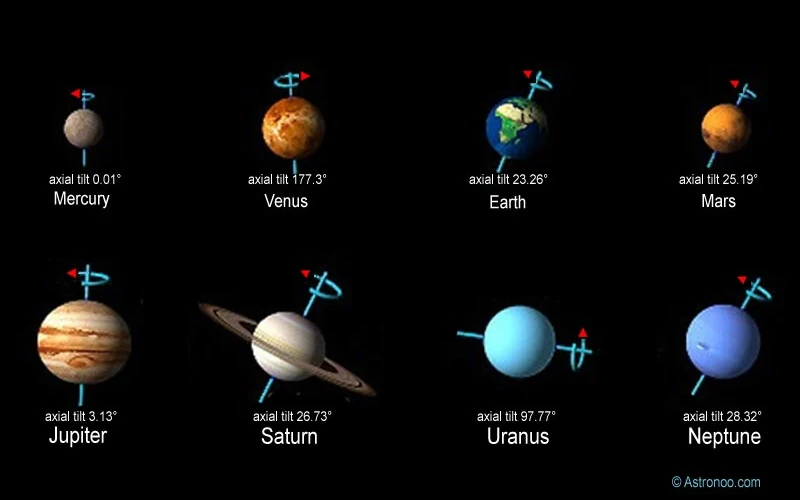
Obliquity of planets refers to the angle between their rotational axis and orbital plane. This tilt is influenced by various gravitational forces and perturbations within the solar system. Although planets form in a similar orbital plane, their obliquities vary due to collisions, tidal forces, and the uneven distribution of internal mass.
Planets should initially have near-zero obliquity, but events like collisions and orbital resonances have altered these tilts. Here are some notable examples:
Mercury (≈ 0°): Mercury maintains near-zero obliquity due to solar tidal dissipation, stabilizing its rotational axis.
Venus (≈ 177°): Venus has a retrograde rotation with a stable obliquity of 177°, resulting in an apparent tilt of 2.64° from the vertical.
Earth (≈ 23.5°): Earth's obliquity varies between 22.1° and 24.5° over a 25,765-year period, influencing the seasons. The Moon likely stabilized this tilt.
Mars (≈ 25.19°): Mars experiences chaotic variations in its obliquity, ranging from 14.9° to 35.5°, due to the lack of a large stabilizing satellite.
Jupiter (≈ 3.1°): Jupiter's obliquity slowly increases due to the migration of its Galilean moons, reaching up to 30° over millions of years.
Saturn (≈ 26.7°): Saturn's obliquity is influenced by its moons, particularly Titan, which gradually move away, further tilting the planet.
Uranus (≈ 97.8°): Uranus has an extreme tilt, nearly parallel to its orbital plane, likely due to ancient collisions or gravitational perturbations.
Neptune (≈ 28.3°): Neptune's tilt is similar to Earth's, Mars's, and Saturn's, influenced by past gravitational perturbations.
The current obliquities of the planets result from a combination of collisions, gravitational interactions, and orbital resonances. These tilts continue to evolve under the influence of various dynamic factors within the solar system.